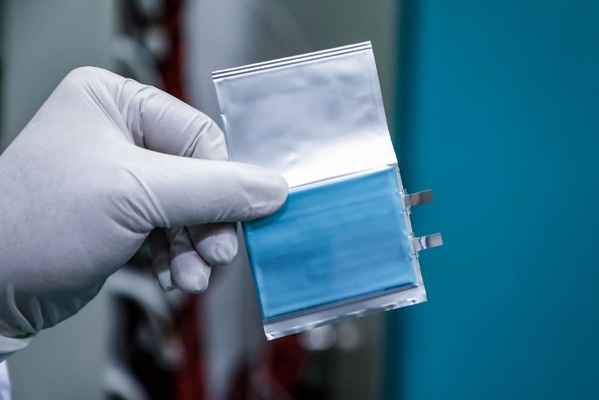A breakthrough in electrolyte design has enabled battery charging at very low temperatures and at unprecedented speed.
A new electrolyte designed by Zhejiang University researchers enables lithium-ion batteries to be charged at temperatures between –70 °C to 60 °C, and reach up to 80% capacity within 10 minutes at room temperature. Their findings were published in Nature1 in February.

Lithium-ion pouch battery in research
Lithium-ion batteries, which power electric vehicles and most of our electronics today, function best in a specific range of temperatures: not too hot, not too cold. When temperatures plunge, the lithium ions that shuttle from one end of the battery cell called cathode to another called anode carrying electrical charge become sluggish. This will cause batteries to take longer to charge and run for shorter lengths of time than at milder temperatures.
For example, a 2019 study by the American Automobile Association found that an electric vehicle’s driving range drops is reduced by 12% at –7 °C compared to its range at 24 °C2.
“This is problematic,” says Xiulin Fan, a professor of material science and engineering at Zhejiang University. Cleaning up the transport sector is a critical step in helping the world reach net-zero goals later this century, and lithium-ion batteries play a key role in this clean energy transition. As such, “we require batteries to charge more rapidly and perform under extreme conditions, whether it be to power cars in wintertime or at high, cold altitudes,” says Fan.
The ideal battery for electric vehicles, he explains, should be able to charge quickly — in 15 minutes or less — and operate across a wide temperature range (between –60 ° C and 60 °C) without compromising energy density and cycle life. Today’s batteries struggle to meet these criteria, but Fan and his collaborators have designed a new solvent — called fluoroacetonitrile (FAN) — that promises quick lithium ion transport, even at low temperatures.

Prof. Xiulin Fan (second from the right) and his team in the lab
A speedy channel
The change lies in the novel electrolyte’s composition. FAN comprises small-sized solvent molecules. Strong electrical interactions between lithium ions and the molecules result in the formation of a solvation structure — in which a central lithium ion is surrounded by bound solvent molecules, known as solvation sheaths. The molecules then form a continuous ligand channel that swiftly ‘pulls’ the ions from one solvation sheath to the other, resulting in “ultra-fast ion transport kinetics.”
“We found that small solvent molecules can enable a previously unknown ion-transport mechanism in battery electrolytes,” says Fan. “Thus speeding up charging and increasing performance at low temperatures.”
When tested at –70 °C, the FAN-based electrolyte achieved an ionic conductivity triple that of traditional carbonate-based electrolytes at similar temperatures, making the lithium-ion batteries charge much more quickly. The coin-cells with FAN-based electrolyte also maintained their performance over 3,000 cycles at 6 C.
Fan’s team is now working closely with industry to commercialize this technology. “The major limiting factor for large-scale commercialization of our new electrolytes is the high cost. We are confident with the continuous update of our technology, this obstacle can be removed,” says Fan.
The ligand-channel-facilitated mechanism can be expanded to the design of other metal-ion battery electrolytes, opening a whole new avenue of research for developing next-generation batteries. “We hope our work will contribute to a low-carbon future,” he says.
References
1.Lu, D. et al. Nature 627, 101–107 (2024).
https://doi.org/10.1038/s41586-024-07045-4
2.American Automobile Engineers. AAA Electric Vehicle Range Testing (2019).
https://www.aaa.com/AAA/common/AAR/files/AAA-Electric-Vehicle-Range-Testing-Report.pdf
(From ZJU NEWSROOM)

